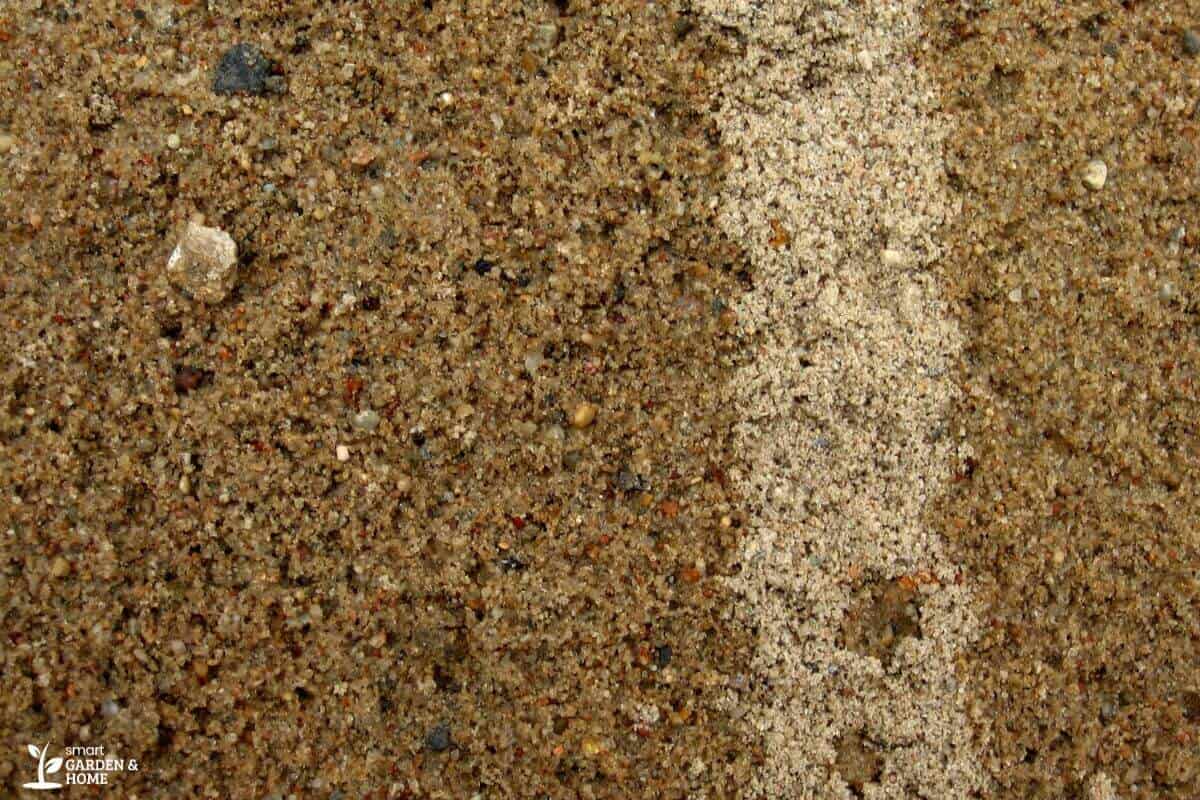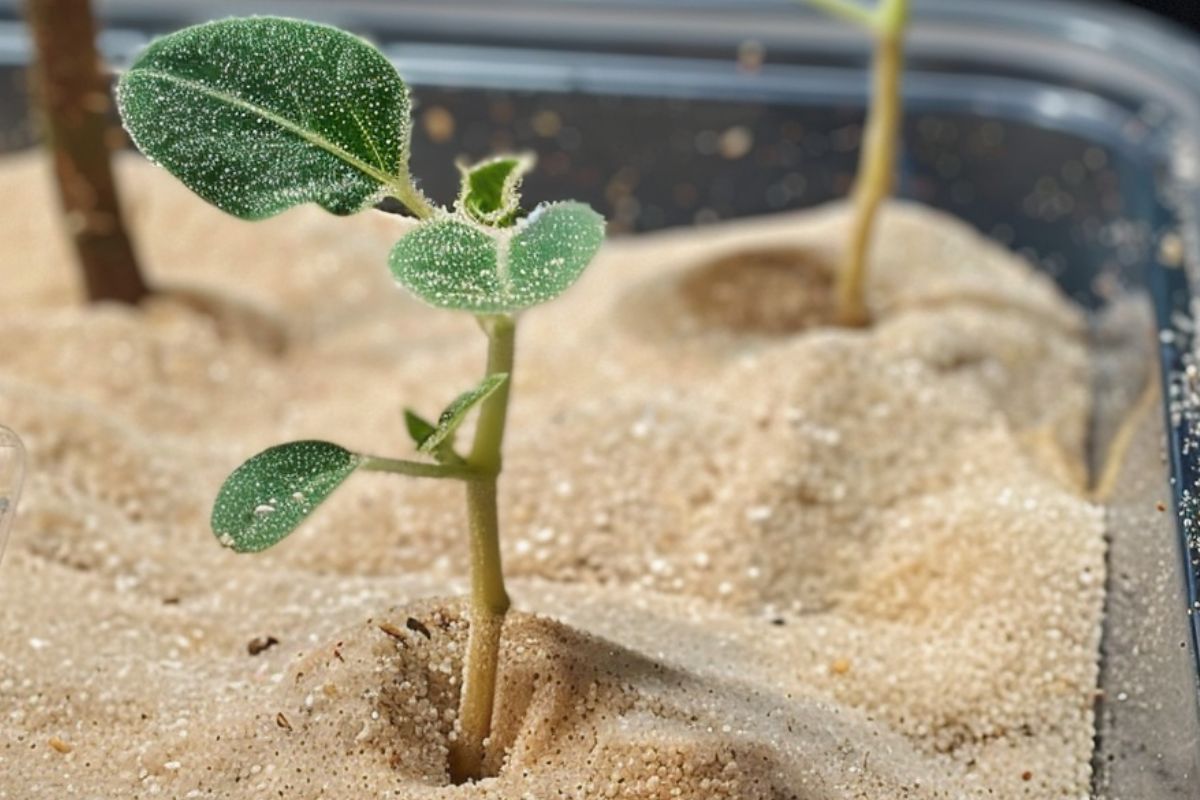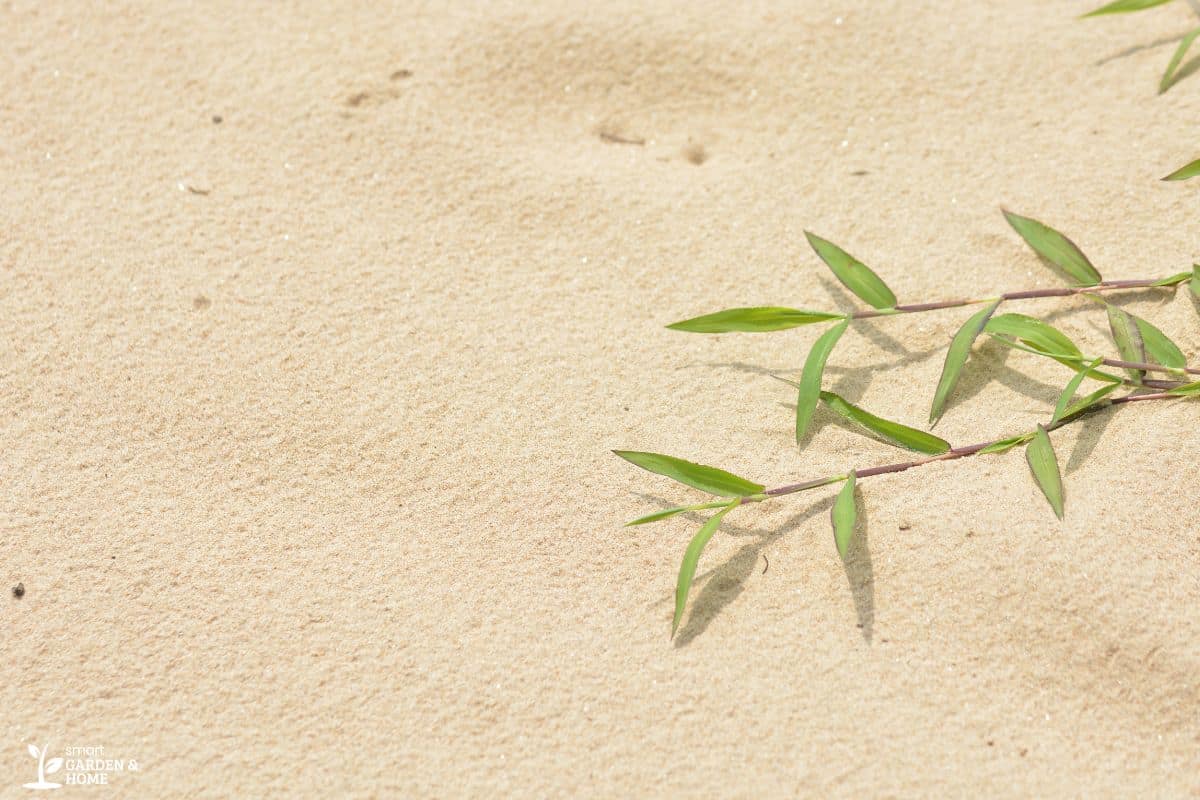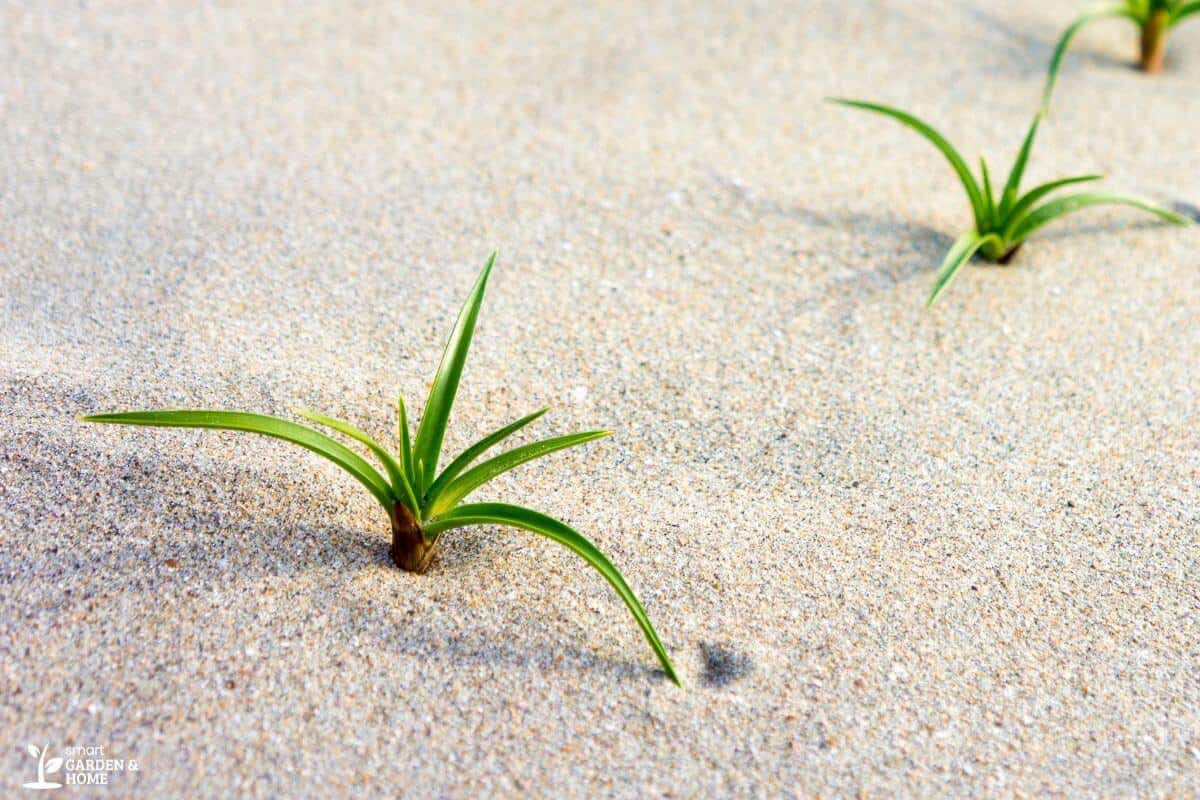You don’t have to stick to one growing medium in hydroponics and it might even benefit you to explore other mediums just to see what suits your routine and plants better.
Using sand in hydroponics, otherwise known as “Sand Culture”, is one of the most affordable soil-less growing methods available.
- Related article: What Is the Best Growing Medium for Hydroponics
Sand is not only pocket friendly but this medium is also effective in hydroponic production. Let’s take a closer look.
What Is Sand?

To the ordinary gardener, sand will feel like soil. It’s similar in texture and naturally can be perceived as soil. Sand can be easily sourced in large quantities compared to some other growing mediums.
Sand comes in different textures. You must remember to stay away from the very fine kinds though as they tend to have high salt content which is not ideal for a hydroponic setup.
The types of sand that one can use in a hydroponic system are:
- Silica sand
- Red sand
- Silver sand
Benefits of Sand as a Growing Medium

Sand as a medium for hydroponic plants and systems have very interesting benefits. Let’s tackle some benefits of using this alternative substrate:
1. Affordable Growing Medium
Sand is readily available and you can source it in large quantities which is why sand is also very affordable.
2. Reusable
If you are searching for a growing medium that can be used continuously without being replaced, then you should consider sand.
Sand can be used continually in a hydroponic system, but will first need to be treated because of its high salt content.
3. More Efficient Than Other Growing Mediums
Sand is considered to be more efficient than other growing mediums because sand decreases the risks of ailments such as Verticillium and Fusarium.
This is solely because hydroponic plants can receive fresh nutrient solutions after being watered, in a hydroponic system.
4. Water Retention
One of the benefits of using sand in a hydroponic system is that it has exceptional water-holding capacity. Sand is therefore able to maintain moisture and this acts as a buffer against flooding.
5. Natural Resources and Safe to Use
If you are wanting to use a natural resource as a growing medium in your hydroponic system, then you should consider using sand. Sand occurs naturally and is safe to use once treated.
Disadvantages of Sand as a Growing Medium

Sand as a growing medium is easy to find and very affordable. However, it can’t all be good. Listed below are the disadvantages of using sand as a hydroponic substrate:
1. Heavy Growing Medium
Sand can get very heavy especially when water is introduced. That means that irrigation can also be a challenge when using sand as a growing medium in hydroponic systems.
2. Smaller Filters
A typical hydroponics system has a filtration system. Some types of sand are very fine and its particles, along with a filtration system do not sound like a good idea together.
In this case, you might need to look for a filter that is way smaller than usual to save your filtration system from too much maintenance.
Cleaning and checking your filter regularly will be key to the upkeep of a hydroponic system with sand culture.
3. High Salt Content
As mentioned above, there are only certain kinds of sand that can be functional in a hydroponic system. Therefore, you cannot simply take sand from a random desert and install it with your plants.
Sand has to be treated before being used. This is to tame its high salt level content and make it useful in a hydroponic system.
High salt levels are fatal for plants in the same way that too much fertilizer can affect them. This will cause the plant to not be able to absorb anything from nutrient-rich water.
4. Poor Aeration
Plant roots require great airflow for them to breathe. Sand as a growing medium is rather heavy and has poor aeration qualities.
This lack of oxygen will stunt the growth of your plants. The plant will begin to focus its energy on finding oxygen in the sand, rather than growing.
Tips for Using Sand in Hydroponics

If you have fully committed to sand culture in your hydroponic system, here are some things that you should keep in mind before you start:
1. Add Gravel to Your Sand
Sand particles are relatively tiny and will easily filter through your hydroponic system.
So even though sand can be used as a growing medium with success, it will still need to be mixed with something like gravel to elevate its poor aeration qualities.
All plants need oxygen to survive and adding larger pieces of gravel to your hydroponic system will improve the breathing properties of your sand.
The roots of your plants won’t suffocate and this will improve their growth rate.
2. Treat the Sand Before Use
If you live in a sandy area, it’s no surprise that plants battle to grow in the sand. Water level easily runs out of sandy soil, so the plants will battle to hold the nutrients needed for your plants to thrive.
Sand’s high levels of salt need to be cured before it becomes useful. To do this, thoroughly soak and rinse an abundance of sand in water for a couple of minutes.
Also, adding perlite or vermiculite once the sand has been treated will greatly improve its ability to retain water and nutrient levels in hydroponic methods.
3. Check the PH Balance of Your Water
When using sand in a hydroponic system, growers will often add gravel to improve the aeration properties of the sand. Gravel that has been added to your hydroponic system will cause a swing in the pH balance of your hydroponic system.
It is therefore vital that you check the pH balance of your water regularly and amend it accordingly.
4. Select the Right Container
You need to choose a watertight container that can hold about two inches of hydroponic solution. This must be airtight so it doesn’t destroy other equipment.
5. Setup Your Hydroponic System Properly
This includes adding clay pellets at the bottom of the container to hold and secure the plants as sand is very fine. Clay pellets also provide oxygen to the roots of the plants.
Your hydroponic setup should also include a timer and submersible pump. Your submersible pump should be connected to the nutrient reservoir while the timer is used to deliver the mixed nutrient solution to your plants at regular intervals.
Final Thoughts on Sand and Hydroponics
Sand culture has been around for quite some time. This means that it is found to be beneficial by multiple growers around the world.
Apart from being easy to source, it is also easy on the budget and effective.
However, many considerations need to be kept in mind before starting a hydroponic garden with sand as a substrate.
It would help to identify the type of plant that you wish to grow, adjust your filtration system, and treat the salt content of the sand.
You will also need to conduct frequent pH balance checks of the water for it to be successful. If done correctly, using sand in a hydroponic system can provide great results.
Eager to learn more about hydroponics? Give these other articles a read:
- Hydroponic Rockwool Cubes
- Using Pumice for Hydroponics
- What Is the Best Growing Medium for Hydroponic Microgreens
- Can You Use Lava Rocks for Hydroponics
- Difference Between Coco Peat and Coco Coir
- Coco Peat for Hydroponics
Sources:


